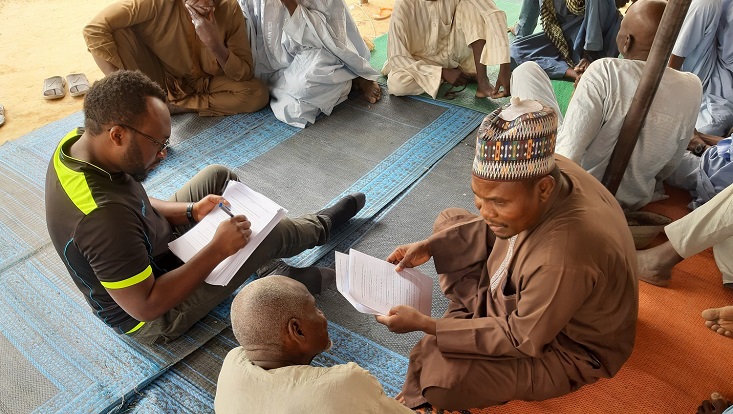Climate, Crisis and Conflicts at Lake Chad
25 May 2020, by Frederic Kamta

Photo: Frederic Kamta
In Nigeria, the terrorist organization Boko Haram is seeking to create an “Islamic state.” For more than a decade, there have been repeated attacks on churches, public places and educational institutes. Violent clashes between these extremists and the military are common, and the conflict has since spread to the neighboring countries Cameroon, Chad and Niger, forcing several million people to flee their homes. In addition, many of them depend on food deliveries from humanitarian organizations, since local agriculture has virtually ground to a halt.
This already volatile situation is exacerbated by the fact that northeast Nigeria and its neighbors have been hard-hit by climate change for the past several years. Prolonged droughts and heat waves have caused Lake Chad and the rivers connected to it – the most important sources of water in the region – to shrink by 90 percent.
At the Center for Earth System Research and Sustainability (CEN) I’m investigating the extent to which the prolonged dryness, in addition to terror, is a cause of conflicts and source of refugees. In 2019 I spent three months in Maiduguri, the capital of the northeast Nigerian state Borno. Over the past few years, the city has also become home to the region’s largest refugee camp. There are currently an estimated 30,000 people living there; I talked with 300 of them.

Most of the people I spoke with were landholder farmers and shepherds, who travel with their livestock from pasture to pasture near their village. According to the interviewees, the water shortages and losses of arable land have caused additional conflicts. Shepherds are fighting amongst themselves over water for their animals. In addition, they have to compete with local farmers for land: one group needs it so their herds can graze, while the other needs it to grow fruits, vegetables and grains.
In the hopes of finding water or land, many people are now leaving their home villages. Some only move a few villages away; others abandon their lives as shepherds or farmers and go to one of the region’s many refugee camps, where they hope to receive at least the bare minimum of food and water they need to get by. Here, they encounter people from other ethnic groups and religions, which also repeatedly leads to conflicts. According to the people I talked with, sometimes these are due to power struggles that took place thousands of years ago, but are often due to the growing competition for resources. After losing their livelihoods, some people choose to join Boko Haram. The extremists promise concrete aid, e.g. in the form of food and shelter.
The interviews clearly show that the prolonged dryness has worsened conflicts and migration movements. My observations in Nigeria match research findings on other countries of the Global South: especially in regions already dominated by unrest or war, climate change multiplies the risk of conflict and strengthens terrorist organizations.
Studies show that climate adaptation measures can improve both security and stability. For example, irrigation systems, boreholes and dams can be used to store rainwater and distribute it in times of drought, helping to stabilize the water supply.
In addition to adaptation, climate protection is indispensable. In this regard, the countries of the Global North are responsible for most of the damage to our climate, but have so far felt the consequences less than the countries of the Global South.
More information
Scientific Paper
Kamta, F. N., Azadi, H., & Scheffran, J. (2020). The Root Causes of the Crisis in Northeast Nigeria: Historical, Socioeconomic and Environmental Dimensions. Mediterranean Journal of Social Sciences, 11(3), 95. https://doi.org/10.36941/mjss-2020-0033
About the Author
Frederic Kamta works at the CEN as a Geographer in the Research Group Climate Change and Security. He is currently writing his dissertation.
Newspaper
This article was first published as a guest article in the Hamburger Abendblatt as part of a monthly series on climate research. Find all articles of the series here.


